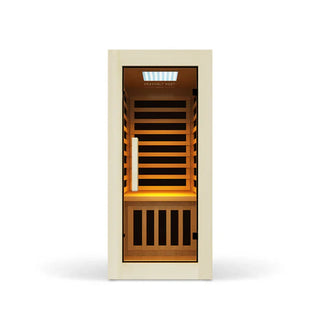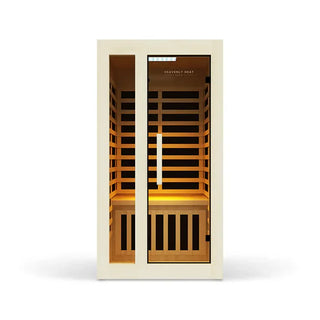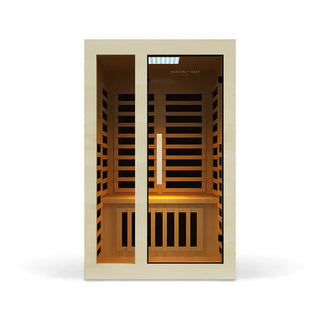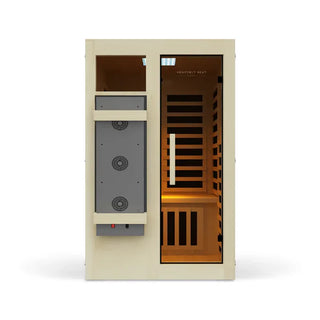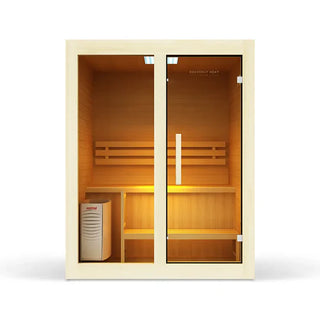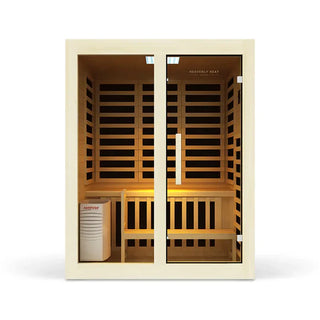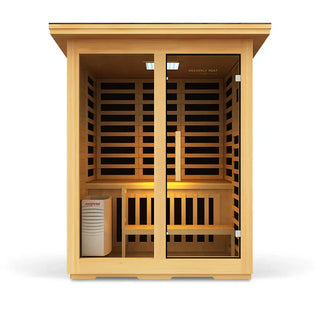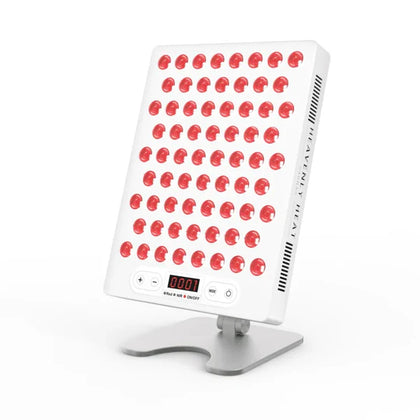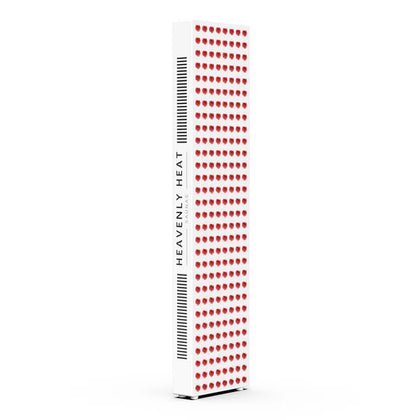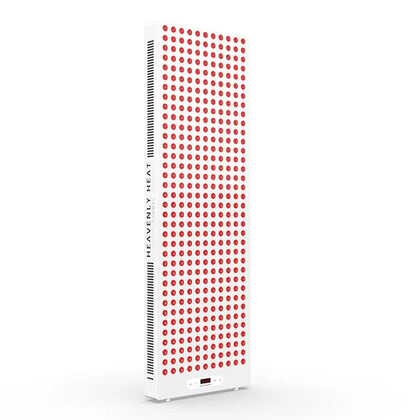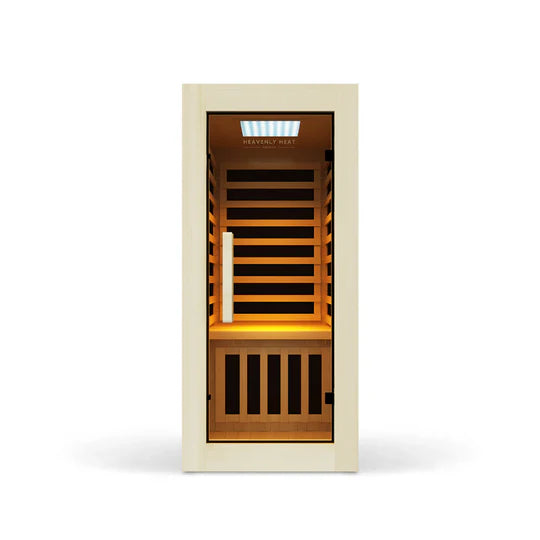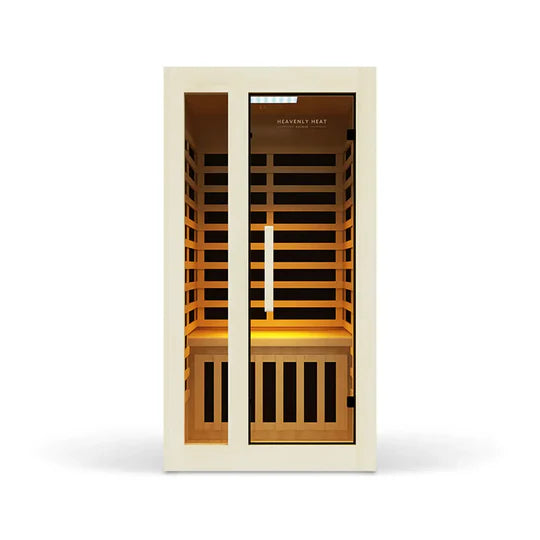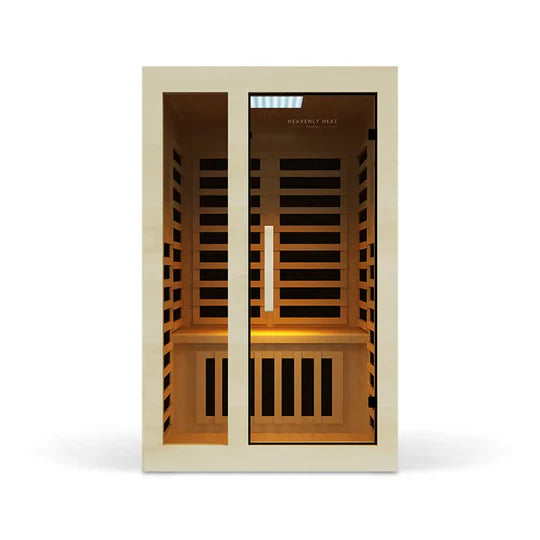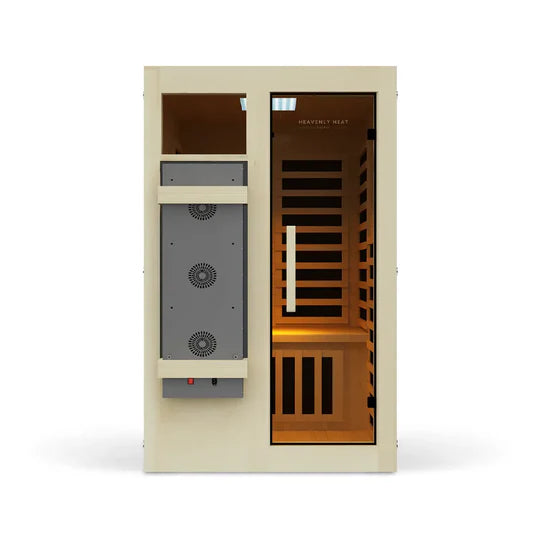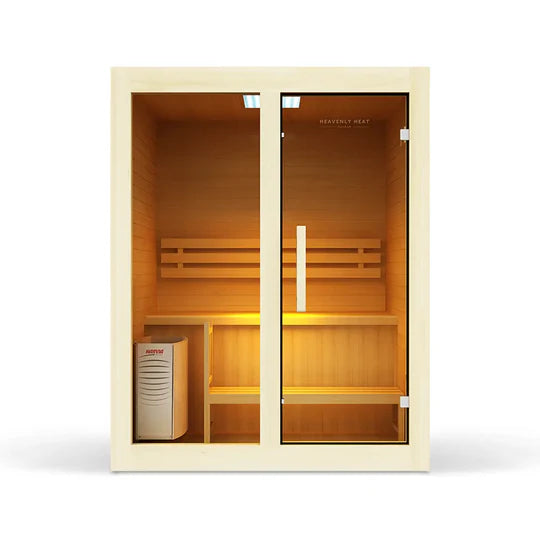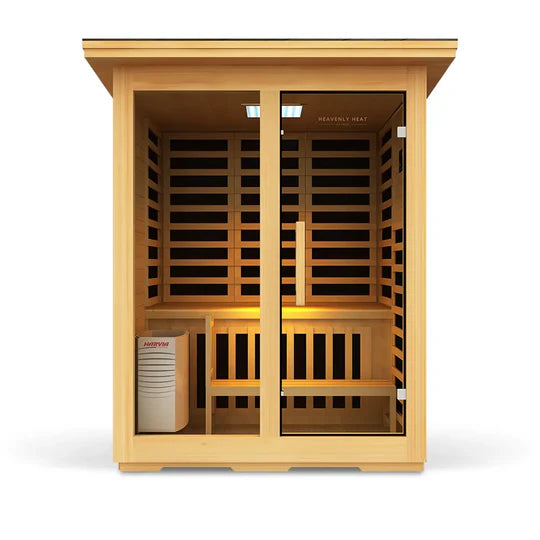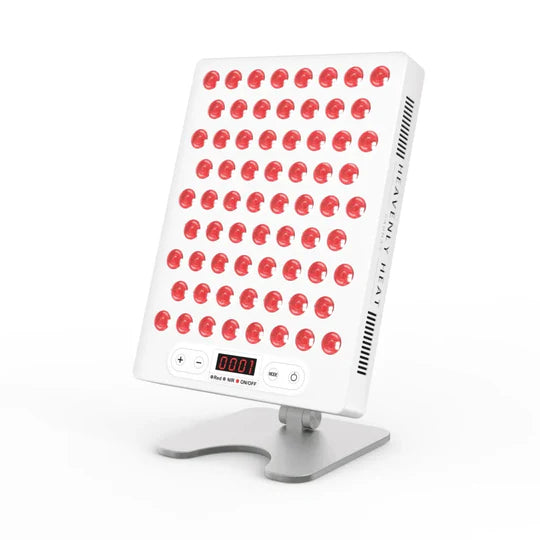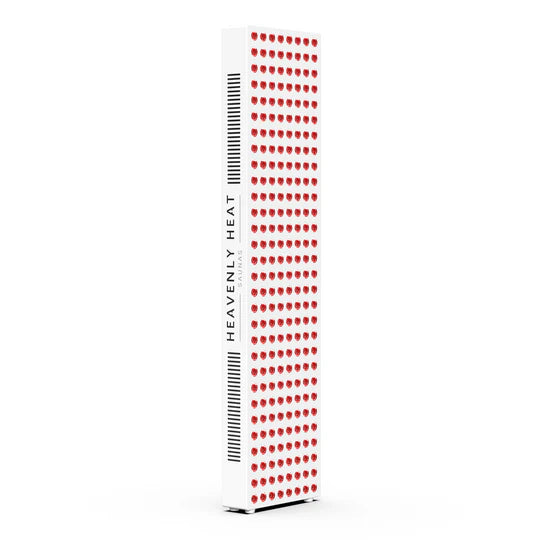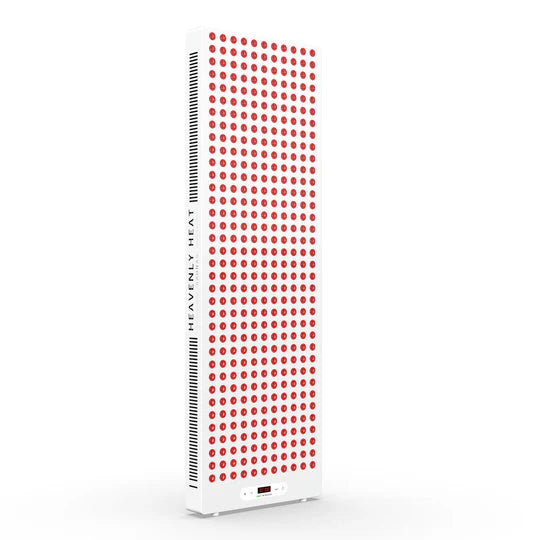Does red light therapy work for back pain?

Nagging back pain, whether it’s a deep muscle ache, stabbing jolt, or radiating burn, can turn everyday tasks like standing, lifting, or walking into a struggle.
Ignoring it doesn’t just hurt, it disrupts work, sleep, and life itself. But what if relief didn’t come from pills or surgery? Discover whether red light therapy could be your breakthrough solution.
Table of contents
Key Takeaways
Red light therapy can reduce back pain by reducing inflammation and promoting tissue repair.
The optimal wavelength for back pain relief ranges from 600 to 900 nanometers.
Regular, consistent use of red light therapy, ideally 3-5 times a week, leads to long-term pain relief.
Handheld devices target specific areas of pain, while larger panels cover a broader area.
Always expose the skin to maximize light penetration, and aim the device directly at the pain spot for effective results.
What is Back Pain ?
Back pain, according to the Mayo Clinic , is one of the most common reasons people visit a doctor and is a leading cause of disability worldwide. It refers to discomfort felt anywhere along the spine, from the neck to the lower back, and often arises due to strain or structural problems in the musculoskeletal system.
Several common causes include:
Muscle or ligament strain: Often triggered by heavy lifting or awkward movements.
Bulging or ruptured disks: These spinal cushions can press on nerves, sometimes painfully.
Arthritis: Osteoarthritis in the spine can lead to narrowing of the spinal canal.
Osteoporosis: Brittle bones increase the risk of vertebral fractures.
Ankylosing spondylitis: An inflammatory condition causing spinal bones to fuse.
Back pain can seriously disrupt daily life, affecting mobility, work, and sleep. While most cases improve with rest and home care, some persist longer and may need medical attention.
On a hopeful note, managing back pain is often possible without invasive treatment. Regular low-impact exercise, maintaining a healthy weight, quitting smoking, and using proper body mechanics can greatly reduce symptoms and prevent recurrence. A proactive, balanced lifestyle remains one of the most effective strategies for lasting relief and spine health.
What Wavelength Is Best for Back Pain Relief?
For red light therapy, the optimal wavelength typically ranges from 600 to 900 nanometers.
This range allows light to penetrate deeply into muscles and tissues. Near-infrared light, around 800-900 nm, is most effective for deep tissue back pain as it reaches deeper layers.
The wavelength enhances cellular healing by reducing inflammation and promoting tissue repair.
How Does Red Light Therapy Work for Back Pain Relief?
Reduces Inflammation in the Back to Decrease Pain and Swelling
When your back hurts, inflammation is often the reason, it causes swelling, stiffness, and pressure on nerves that leads to pain.
Red light therapy helps by going deep into your tissues and calming that inflammation right at the source. It gives your cells an energy boost, helping them repair faster and work better.
This means less swelling, less pressure, and less pain. According to AIMS Biophysics 2017, red light therapy activates the mitochondria (the powerhouses of your cells), boosts healing, and lowers inflammation in areas like the spine. That’s why it can make a real difference if you’re struggling with back pain.
Boosts Blood Flow to Affected Areas for Faster Healing and Recovery
When your back hurts, getting more blood to the painful area can really help you heal faster and feel better.
Better blood flow brings in fresh oxygen and nutrients your body needs to repair damaged muscles and tissues.
Red light therapy does exactly that, it opens up your blood vessels and gets your circulation moving.
A 2021 study in the Journal of Photochemistry and Photobiology B: Biology found that 670 nm red light triggers the release of natural healing molecules (RSNOs) that relax blood vessels and boost blood flow, helping your back recover more quickly.
Relaxes Tight Back Muscles, Reducing Tension and Discomfort
Tight back muscles can make every move feel stiff and painful. Red light therapy helps by sending gentle light deep into your muscles, where it boosts energy in the cells and calms down inflammation.
This lets your muscles relax, which eases tension and takes pressure off your spine. As a result, you feel less pain and more freedom to move.
According to a study published in the European Journal of Physical and Rehabilitation Medicine (2022), this kind of light therapy can safely reduce muscle pain and discomfort without drugs or side effects,especially in the lower back.
Stimulates Cellular Repair and Regeneration to Heal Damaged Tissues
Red light therapy helps your body fix itself from the inside out. When the red light reaches your back, it gives your cells a boost of energy, helping them repair damaged muscles and tissues faster.
This means less pain, less stiffness, and better healing where it hurts most. If your back pain comes from an old injury, sore muscles, or inflammation, red light can help your body bounce back quicker.
A study published in Photomedicine and Laser Surgery (2012) showed that red light therapy sped up cell repair without causing any harmful effects, even in mice with tumors. That’s real proof it can safely support healing.
Eases Chronic Back Pain Symptoms, Providing Lasting Pain Relief
Red light therapy gives lasting relief by calming the inflammation and healing the tissues that cause chronic back pain.
It works by sending gentle red light into your skin, which wakes up your cells and helps them repair damage more quickly.
One study showed that red light at 660nm helped ease pain from nerve damage by changing how the brain and spinal cord respond to pain signals.
Another review found that using LED and laser red light therapy reduced pain in conditions like fibromyalgia and back pain, without drugs, side effects, or complicated treatments.
Improves Spine Flexibility and Mobility, Enhancing Movement and Reducing Stiffness
Red light therapy reduces stiffness and helps restore flexibility by promoting circulation and healing in soft tissues. This makes movement easier and reduces discomfort during bending or stretching.
Other Therapies that help with back pain
Acupuncture
Acupuncture helps back pain by gently triggering your body’s natural healing process. It boosts blood flow, eases tight muscles, and releases feel-good chemicals that lower pain.
A large 2024 study found that treatments like personalized acupuncture and electroacupuncture with movement training worked better than fake treatments, people felt real pain relief and moved more easily.
Another review looked at 16 studies and found acupuncture gave short-term pain relief and better function, especially for long-term back pain. So yes, when done right, acupuncture can be a smart, natural way to feel better.
Massage
Massage can really help ease back pain by relaxing tight muscles, improving blood flow, and calming the nerves that send pain signals.
It’s like hitting a reset button for your back. One study followed a 63-year-old man with serious back problems, arthritis, scoliosis, spinal stenosis, and disc disease.
After just four massage sessions in 20 days, he reported less pain, needed fewer painkillers, and even rode his bike again after years.
Another review looked at 25 trials with over 3,000 people and found massage helped reduce back pain and improve movement,especially in the short term.
Stretching Exercises
Stretching exercises really can help with back pain. When your muscles get tight and stiff, they pull on your lower back and make the pain worse.
Stretching helps loosen those muscles, makes your body more flexible, and takes pressure off your spine.
It also helps you move better during the day. One study on nurses with long-term back pain showed that doing a simple stretching routine three times a week brought big relief, they had less pain and felt more confident about staying active.
Another study found that stretching worked just as well as special core exercises for reducing pain and improving flexibility in people with chronic back pain. Both groups felt better even months after finishing the program.
So, if you want a natural, drug-free way to manage back pain, stretching is a great place to start. It’s easy to do, safe, and can make a real difference in how your back feels.
Infrared Light Therapy
Infrared light therapy works by sending gentle heat deep into your muscles, where it boosts blood flow and lowers inflammation.
This extra blood flow brings more oxygen and nutrients to sore areas, helping your back heal faster and move easier.
In one study published in the Journal of Bodywork and Movement Therapies,2014, people with chronic low back pain received infrared treatments 3 times a week for 4 weeks.
After just 10 sessions, their pain dropped, flexibility improved, and their back muscles got stronger, showing how effective infrared therapy can be.
How Often Should You Use Red Light Therapy for Back Pain?
Typically, it’s recommended to start with 3 to 5 sessions per week, each lasting 10 to 20 minutes.
As your back responds, you can gradually reduce the frequency. If you're dealing with acute pain, shorter and less frequent sessions may be enough, while for chronic pain, twice-daily sessions can be more effective in providing relief. Consistent use is key to achieving long-term relief.
Is Red Light Therapy Safe for Daily Use on the Back?
Using red light therapy daily is generally safe, as long as you avoid overdoing it.
Sessions should last no longer than 20 minutes to prevent skin irritation. Consistency is crucial for effectiveness.
How Long Does It Take to See Results with Red Light Therapy?
Most people feel relief from back pain after just a few sessions. Significant improvement typically occurs after 5 to 10 sessions, especially for chronic pain.
How to Position a Red Light Device for Back Pain Relief?
Identify the Exact Location of Back Pain Before Starting Treatment
Pinpoint the exact location of your back pain by gently pressing on different areas to locate tender spots.
Movements that trigger pain can help you determine where to treat. If pain radiates to other areas, include those spots in your treatment.
Sit or Lie Comfortably to Access the Pain Area Easily
Whether you're lying on your back or sitting, make sure you are in a comfortable position that allows you to easily access the painful area.
Position the Device 6-12 Inches Away for Optimal Effectiveness
For the best results, position the red light device about 6-12 inches away from your back.
This distance allows the light to penetrate the skin effectively. If you're too close, the heat may cause discomfort or even burns, while being too far away can reduce light absorption, making the therapy less effective.
Aim the Light Directly at the Pain Spot for Targeted Relief
- Keep the Light Directly on the Pain: Ensure the red light device is aimed precisely at the painful area. Maintaining direct contact with the source of discomfort allows the therapy to work effectively.
- Adjust the Angle for Better Results: The angle at which the red light hits the affected area matters. Adjust the device to ensure the light fully covers the pain spot, maximizing relief.
- Keep the Device Steady During Use: While there's no need to apply pressure, it's crucial to hold the device steady. Any movement can reduce the light's effectiveness and lower the chances of relief.
- Stay Focused on the Treatment Area: Consistently focusing the light on the pain spot throughout the session ensures maximum benefit. If the light shifts away, the relief may not be as effective.
Expose Your Skin to Ensure Better Light Penetration and Absorption
- Keep your back uncovered so the light can reach your muscles: For red light therapy to work well, your skin must be exposed. Clothes,even thin ones,block the light from going deep enough to help your back pain. Always make sure your back is bare so the light can reach the muscles and tissues underneath.
- Place the device close to your skin so it works better: The closer the red light device is to your bare skin, the deeper it can go. Keeping it near helps it reach the painful areas faster and more effectively. Avoid holding it too far away.
- Give your skin more time under the light for better pain relief: Longer sessions let your skin absorb more healing light. This helps reduce pain and supports recovery. Just be sure the treated area stays uncovered the whole time.
Follow the Recommended Duration for Safe and Effective Treatment
Typically, sessions last between 10-20 minutes per area, depending on the severity of your pain.
Stick to the advised duration for optimal results. Going beyond the recommended time or using high-intensity settings can cause skin damage, including burns or blisters, and may even harm your eyes.
Staying within the guidelines ensures safe and effective treatment, so it’s important to follow them closely.
Use the Device Consistently to Achieve Long-Term Pain Relief Benefits
- Using it often is the only way to feel better for longer: Red light therapy doesn't work overnight. You need to use it regularly, daily or several times a week, for the best results. Being consistent is the real key to back pain relief that lasts.
- Skipping days will slow down your progress: If you miss sessions or stop using the device, it can delay your pain relief. The more consistent you are, the faster and more reliable your results will be.
- Pain relief starts slowly but gets better with time: You might feel some relief in a few weeks, but the true benefits build up the longer you stick to it. Staying committed helps your body respond better.
- Regular use helps your muscles recover and feel stronger: Red light therapy supports healing in your muscles, but only if you use it consistently. The more often you use it, the better your body can recover and manage pain.
What Type of Red Light Device Is Best for Back Pain?
- Types of Red Light Devices for Back Pain: When choosing the best red light therapy device for back pain, it’s important to understand the types of devices available. Options include handheld devices, panels, belts, and mats.
- Handheld Devices Provide Targeted Relief: Handheld devices are ideal for targeting specific areas of pain in the back, offering focused and precise relief.
- Panels Cover a Larger Area of the Back: Panels are designed to cover a wider area, making them more effective for treating the entire back at once.
- Wearable Belts Allow for Hands-Free Treatment: Red light belts are wearable, providing hands-free treatment so you can move around while the device targets your back pain.
- Ideal Wavelengths for Effective Pain Relief: The most effective red light therapy devices use wavelengths between 660nm and 850nm, which can penetrate deep into the tissues for better pain relief.
- Pulsed Light Promotes Healing, Continuous Light Relieves Pain: Pulsed light enhances cellular repair, while continuous light provides steady pain relief for prolonged periods.
- Strong Irradiance for Better Results: For effective treatment, look for a red light device with an irradiance of at least 100mW/cm² to get noticeable results.
Are Handheld Red Light Devices Good for Back Pain?
Yes, handheld red light therapy devices are effective for back pain. They target specific areas of pain and help with both upper and lower back issues.
Though they may take more time to treat larger areas since they focus on smaller spots, panel devices can speed up the process by covering broader areas at once, offering a more efficient option for larger problem areas.
Is There a Difference Between Red and Infrared Light for Back Pain?
Red light (600-650 nm) targets superficial tissues, while infrared light (800-1,000 nm) penetrates deeper into muscles and tissues, making it more effective for deeper muscle pain and injuries.
Can Pregnant Women Use Red Light Therapy for Back Pain?
Red light therapy can be safe for pregnant women but should be used with caution. It’s important to consult a healthcare provider before starting treatment, especially in the first trimester.
FAQs
Can Red Light Therapy Help with Sciatica Pain or Nerve-Related Back Pain?
Yes, red light therapy can provide relief for sciatica by increasing blood flow and reducing inflammation around the irritated sciatic nerve.
Can Red Light Therapy Be Used in Combination with Other Pain Management Treatments for Back Pain?
Yes, it can complement treatments like physical therapy, TENS therapy, and post-surgery recovery. Always check with your healthcare provider before combining therapies.
Does Red Light Therapy Offer Long-Term Pain Relief for Chronic Back Pain, or Is It Only Temporary?
Red light therapy can lead to long-term pain relief, especially with consistent use. The benefits tend to build up over time as inflammation decreases and tissues heal.
Are There Any Specific Contraindications or Health Conditions That Prevent the Use of Red Light Therapy for Back Pain?
People with certain conditions, such as photosensitive skin, pacemakers, or thyroid issues, should consult a doctor before using red light therapy. Pregnant women should avoid it in certain areas.


